Section 4: Chocolate Today and Tomorrow

This section of the exhibit explores everyday connections to Chocolate. Experts and historians aren’t the only ones with stories to tell, so the UIC Latino Cultural Center hosted numerous programs, and invited students, faculty, and community members to contribute to this portion of the exhibit. Chocolate has been absorbed into everyday popular culture, which is all around us. However, as we explore the joys and fun of chocolate, we should also recognize the ways we all connect to the international chocolate market. Are there things we wish were better? Are there ways everyday people can help? Submit your choco-stories at our home page, and help continue the conversation.
Section 4: Chocolate Today and Tomorrow Heading link
Choco-Story: Chocolate Mug
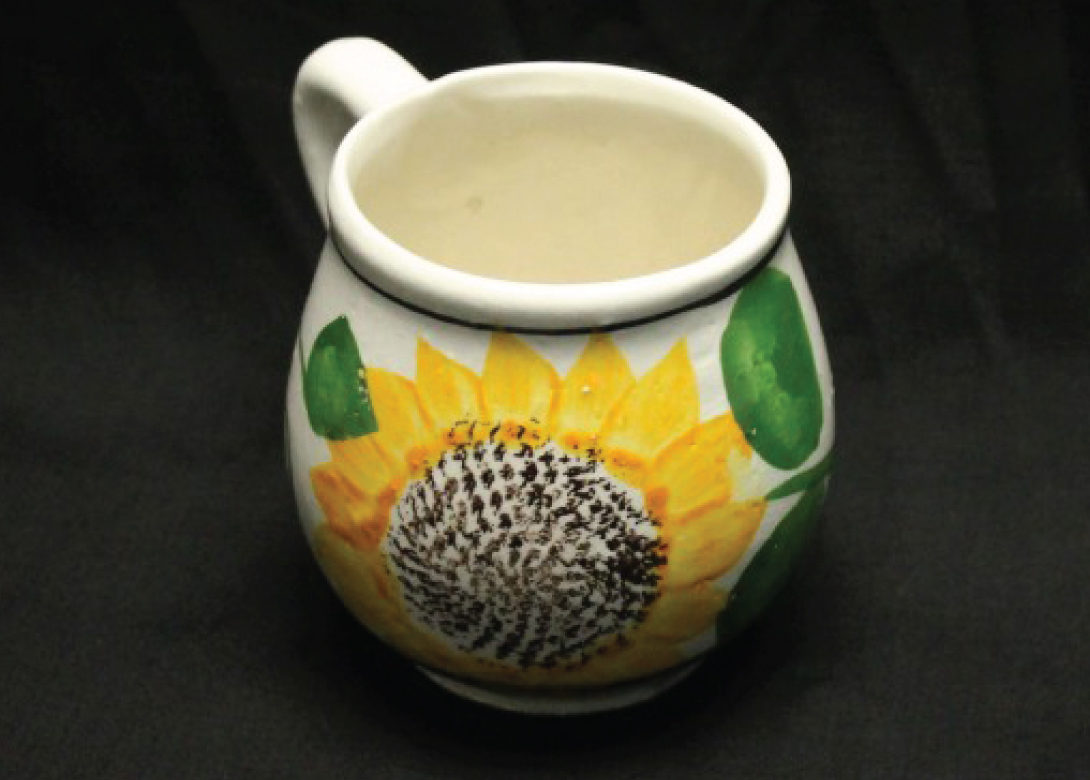
Chocolate Mug
Ceramic; Chicago, USA
Edith Tovar, 1980
My grandmother would make delicious hot chocolate or atole de elote (corn gruel) when we came to visit. She would serve our drinks in these small ceramic mugs that she only used on special occasions. She currently lives in Acatempan, Guerrero, Mexico; one of the many dangerous towns that is being ravaged by violence. Due to the increased violence, she does not allow us to visit her. It’s been 8 years since any family member living in the U.S has visited her, including myself. It’s not the actual object that’s special but how it allows me to reminisce on simpler times when it was “easy” to visit my grandmother.
Submit your own chocostory on our home page
Pop Culture Chocolate
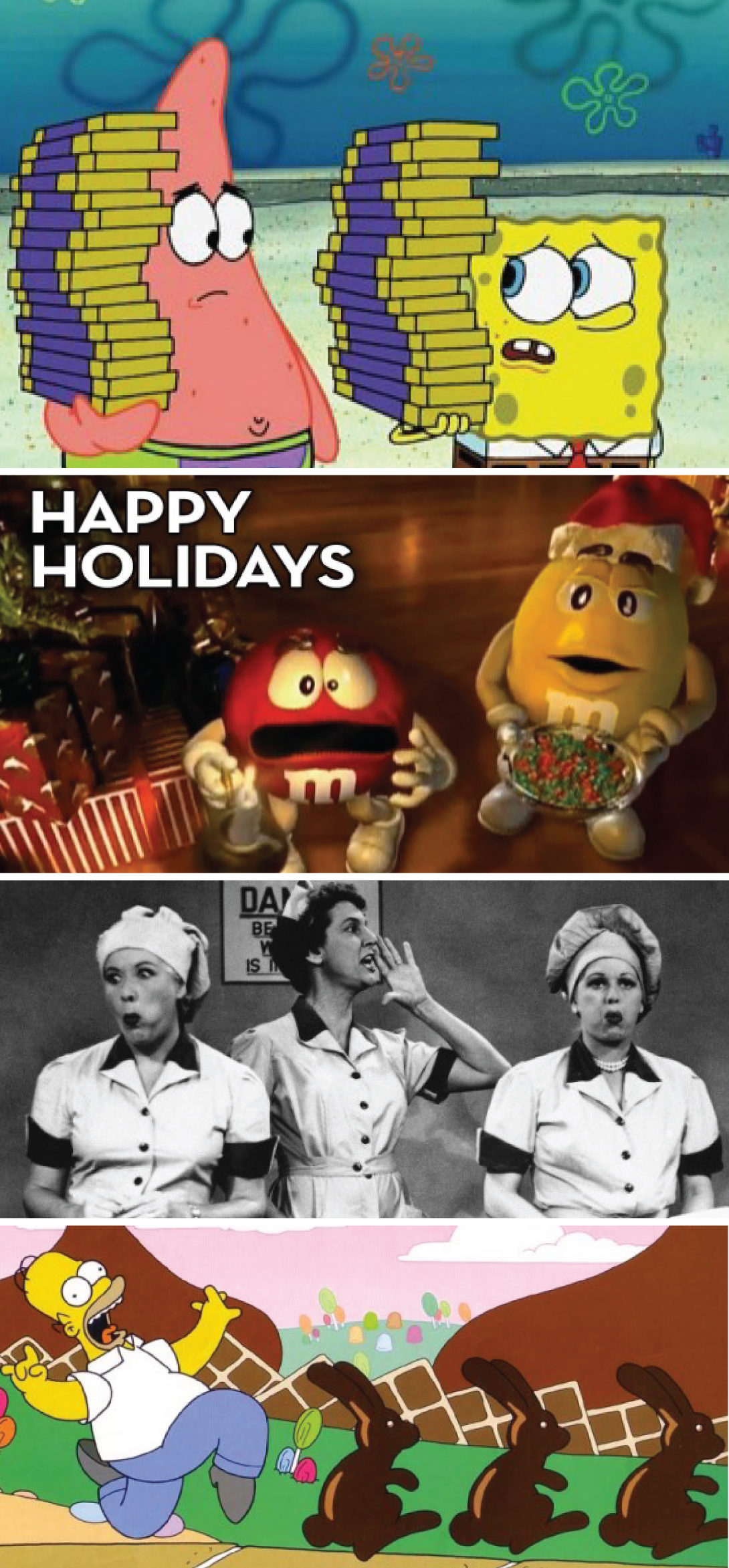
Lucy works in a chocolate factory
“Job Switching” episode
I Love Lucy TV show, 1952
Homer Simpson goes to chocolate fantasy land
“Burns Verkaufen der Kraftwerk” episode
The Simpsons TV show, 1991
M&Ms meet Santa on Christmas
“They do exist” M&Ms TV commercial
1996
Spongebob sells chocolate
“Mermaid man and Barnacle Boy V” episode
Spongebob TV show, 2002
Chocolate has become a regular part of our popular culture. From television advertisements to books and movies, some of our most beloved cultural characters have encountered chocolate in one form or another. Do you remember when Lucy worked at the candy factory? or when the M&Ms met Santa?
Tell us your favorite stories using #chocostorylcc or submit a story on our home page
Chocolate in Literature
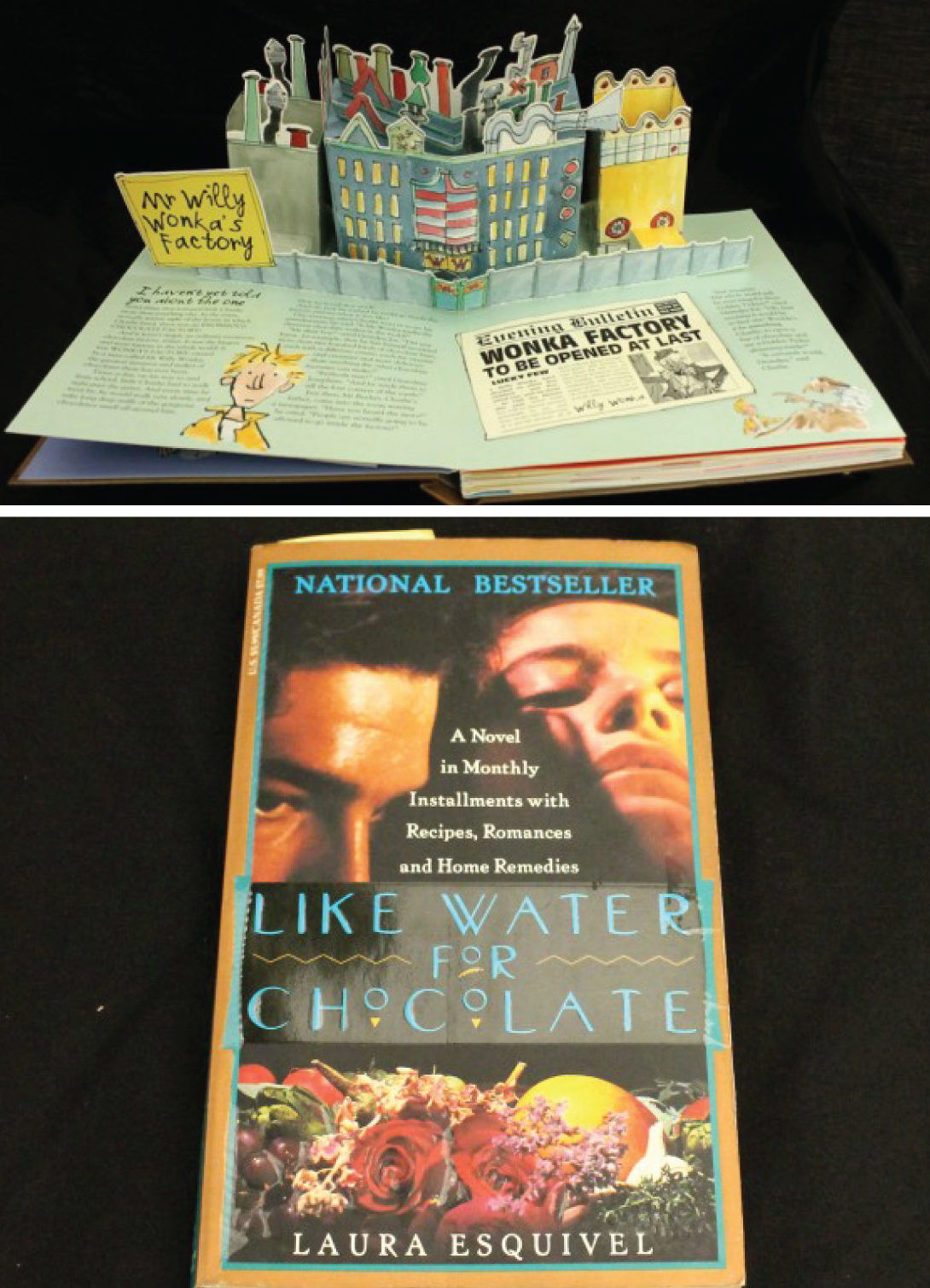
Charlie and the Chocolate Factory Pop-Up Book
Paper, ink; England
Roald Dahl, Quentin Blake, 2011, originally 1964
Like Water for Chocolate
Paper, ink; Mexico
Laura Esquivel, 1994, originally 1989
Chocolate has become a regular part of our popular culture. From television advertisements to books and movies, some of our most beloved cultural characters have encountered chocolate in one form or another.
Want to find more books about chocolate?
Check out the UIC Library’s Research Guide for books, websites, and all sorts of other chocolatey knowledge.
Choco-Story: Moonstruck Box

Moonstruck chocolate box
Lena & Owen Guerrero Reynolds
2007
A few years ago, my brother moved to Nicaragua to join the Peace Corps. Growing up in Chicago, we loved fall, a time when leaves fell, pumpkin soup was plentiful, and you could bust out the hot cocoa again on chilly nights. Moving to the rainforests of Central America, I knew he’d miss the sights and smells of fall. I was working at a chocolate shop/café at the time in Urbana, IL where we sold chocolate truffles. I collected a box of the best I could think to represent the nostalgia of the season: nutmeg and cloves, leaf shapes and pumpkins. He loved the chocolates, and saved that box. He also ended up falling in love with Nicaraguan-style chocolate, including their national drink, Pinolillo. Not long after the economic crash, Moonstruck Chocolate shut down their Midwest locations, and now it can only be found in Seattle. So boxes like this are probably pretty rare around here these days, and none have a story quite like ours!
Submit your own chocostory on our home page
Global Chocolate

Forteza, Cuba; Mayordomo, Mexico
Cadbury, UK; Kabaya, Japan
This display highlights just a few of the chocolates that can be found around the world. From Cuba to Japan, Mexico to England, chocolate has been embraced by many cultures. Have you eaten chocolate on any world travels?
Tell us about it using #chocostorylcc or submit a story on our home page
Abuelita & Ibarra chocolates
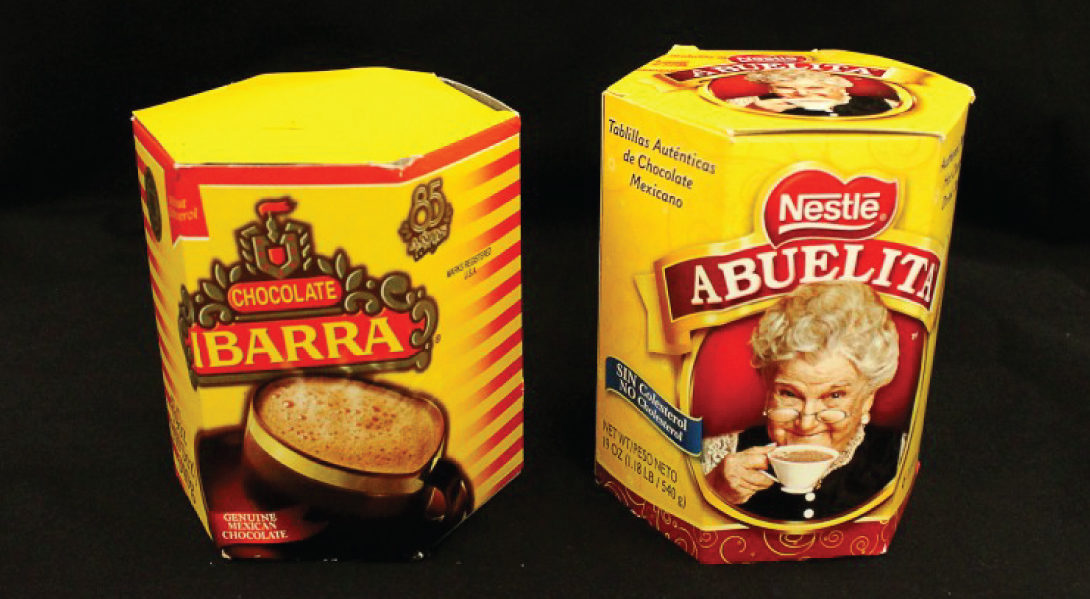
Abuelita Chocolate, Nestle, Switzerland
Ibarra Chocolate, NovaMex, Mexico
You may have eaten Abuelita chocolate before, but did you know it’s not actually from Mexico? Nestle is a European company whose chocolate mostly comes from Africa, but Ibarra is a truly Mexican company, with a more sustainable product, so make the switch today!
Labor Abuse and Income Distribution Graphics
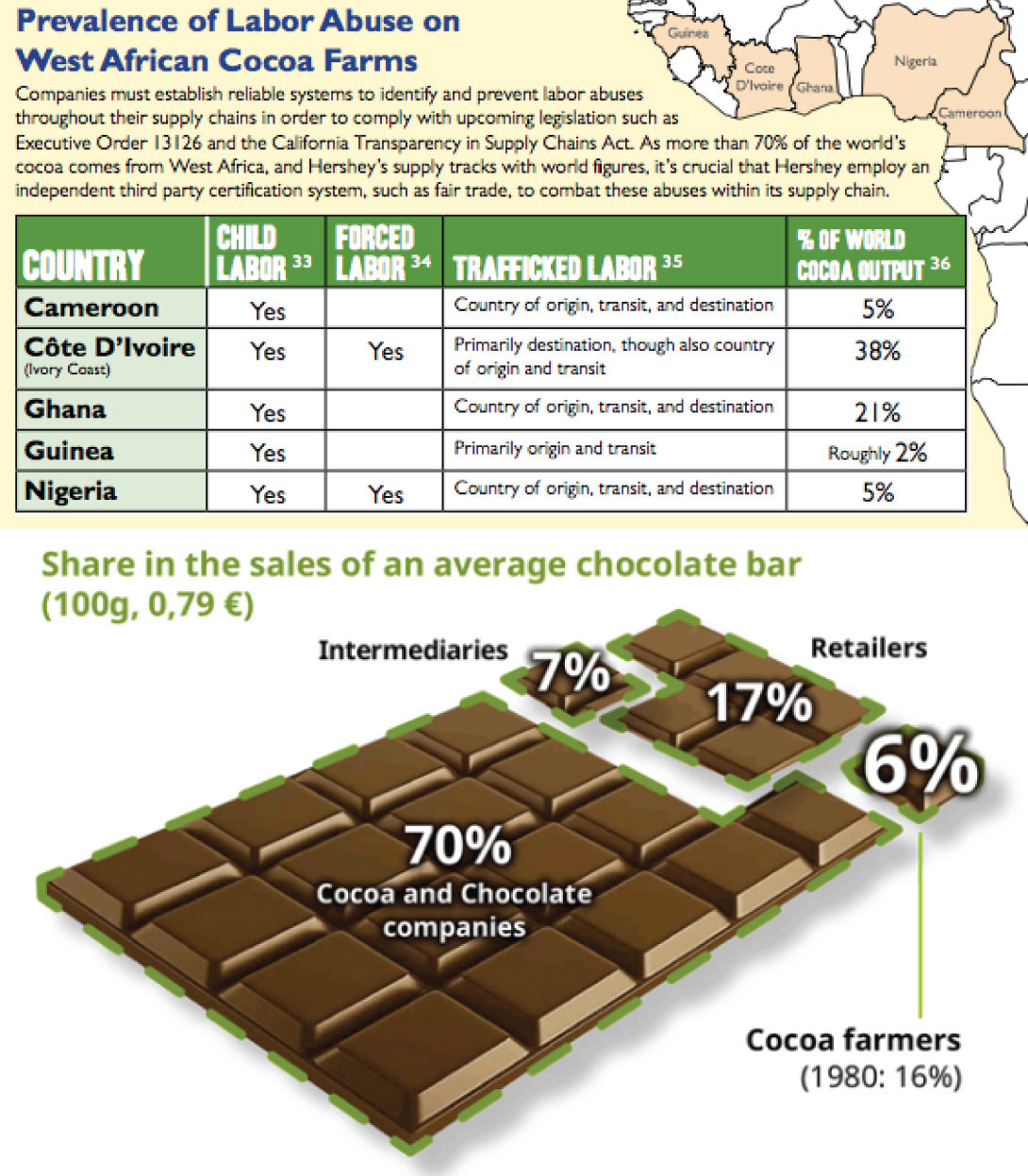
Prevalence of Labor Abuse in West Africa
Source: Alders Ledge Blog
Cocoa Income Distribution
Source: Make Chocolate Fair
To find out more about the troubling chocolate market, check out these graphics, or documentaries like The Dark Side of Chocolate.
Fair Trade Chocolate
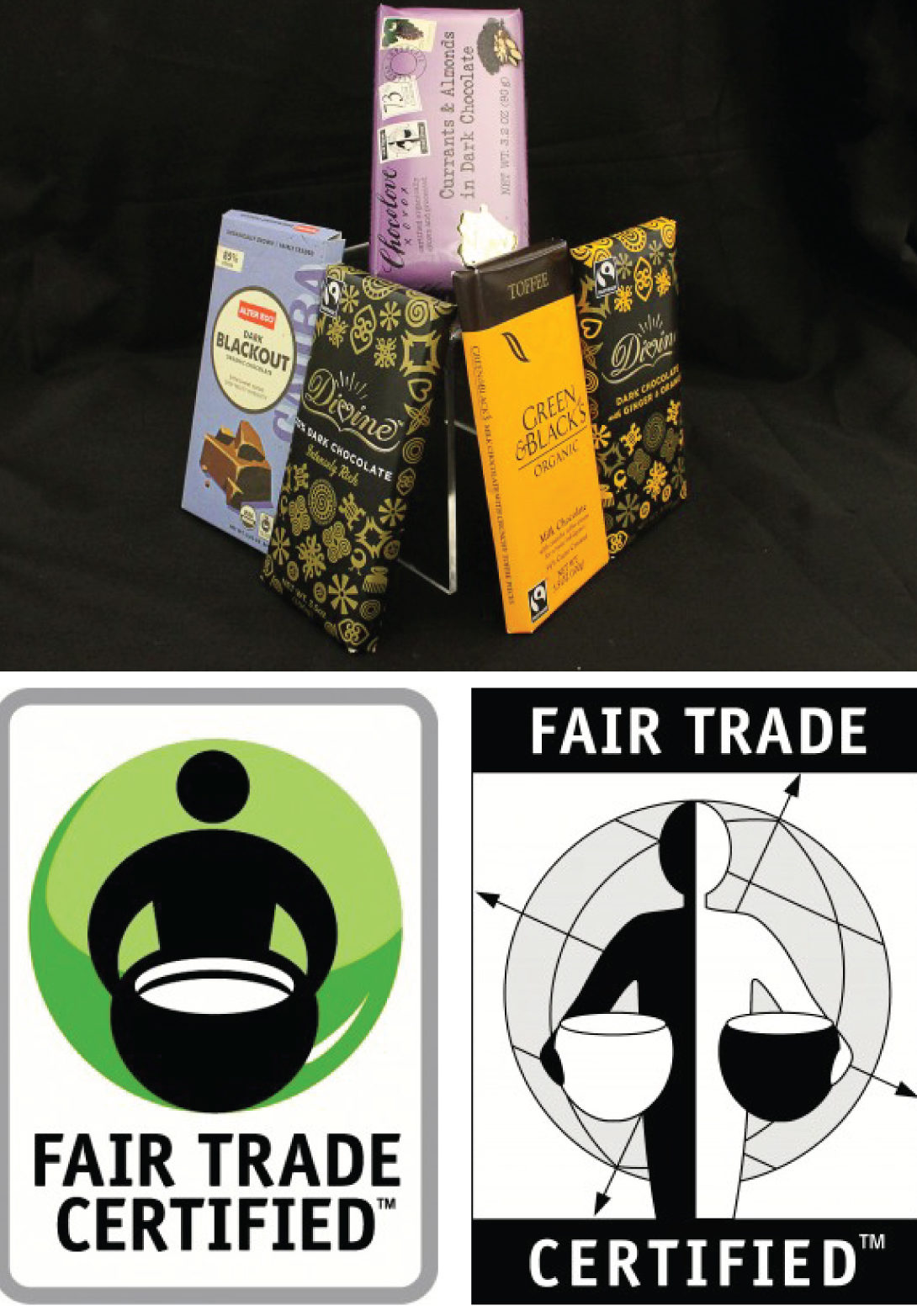
Alter Eco, Madécasse, Divine , Lily’s
Black & Gold, ChocoLove,
Salazon, Equal Exchange
Fair Trade logos
Source: Fair Trade USA
Chocolate is notorious for exploitative conditions, sometimes likened to slavery, including the use of child labor. Some plantations–particularly in the Ivory Coast–provide much of the world’s chocolate, and are used in brands like Nestle, Mars, and Cadbury. Fair trade chocolate provides an alternative, produced under fair conditions, returning more profit to the workers. Fair trade chocolate is produced by worker cooperatives that distribute profits equitably, where workers have control over their own production. Cocoa producers have benefited from hard lessons learned in the fair trade coffee sector. As large corporations like Starbucks jumped on the fair trade coffee bandwagon after 2001, concerns over corporate profit and corporate responsibility to shareholders began to trump some of the core values of fair trade, weakening its social justice agenda. This led to price stagnation and a declining commitment to worker cooperatives. In response to this, when Divine chocolate formed as a fair trade chocolate brand, it immediately dispersed half of the company’s shares to the coffee growers themselves. This means that workers receive not only a favorable fair trade price per ton of cocoa, but also a share of profits from the sale of manufactured candy. Running the company for the best interests of the shareholders is also in the best interests of the growers!
Sustainable Chocolate
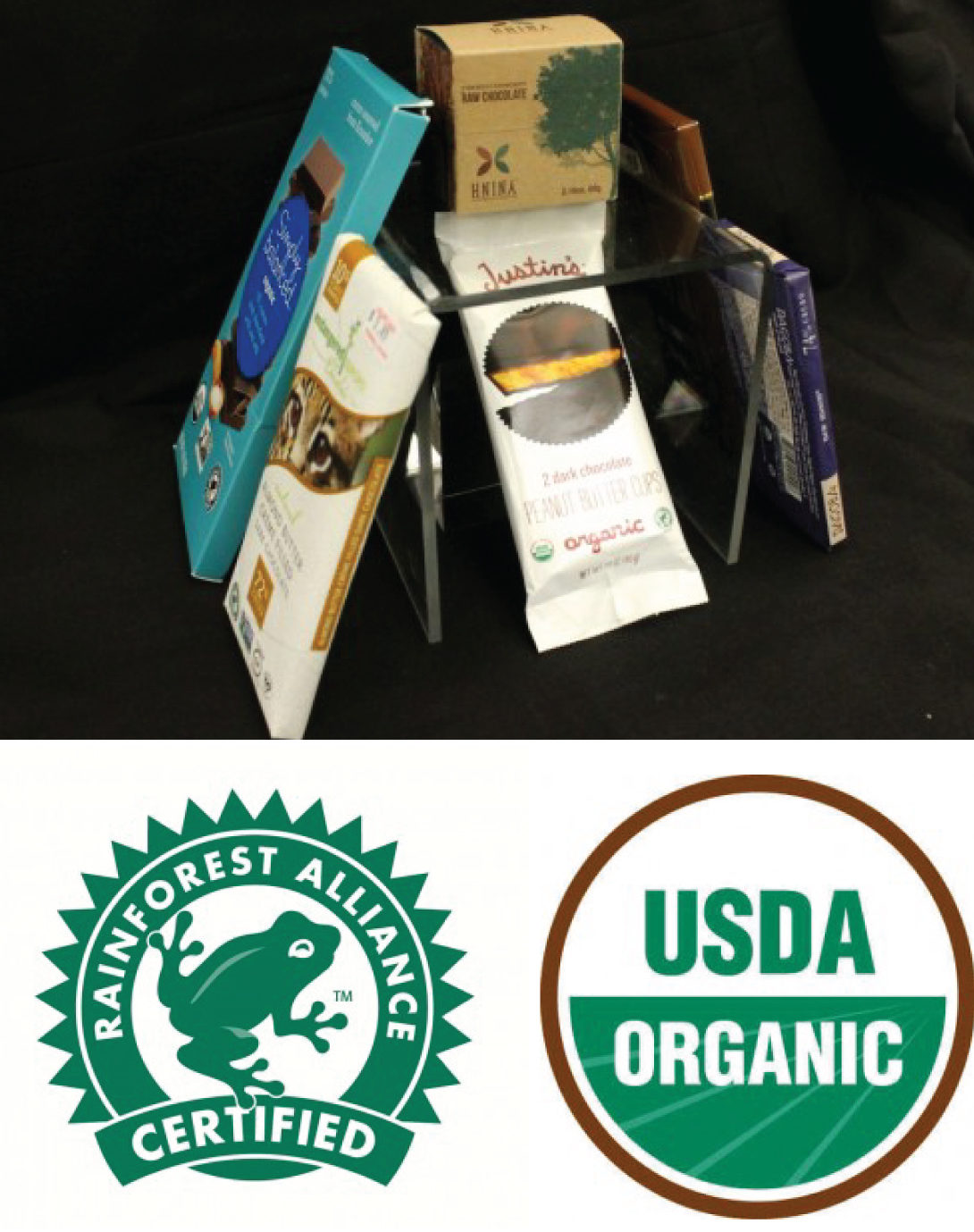
Endangered Species, Hnina, Vosges
Justin’s, Simply Balance Organic
Dagoba, Newman’s Own, Theo, Whole Foods
Organic & Rainforest Alliance Logos
Source: USDA Organic Agriculture
Source: Rainforest Alliance
Khuno, the god of storms, destroyed a village with torrential rain and hail because he was angry at the people for having set fire to the forest to clear and for their crops. After the storm, the people found a plant. This was the beginning of the use of cacao. – Peruvian myth
Cacao depends on the rainforest, one of the regions most hurt by human development and climate change. Look for the Rainforest Alliance logo on chocolate and many other products to ensure your purchase supports the whole rainforest ecosystem. The Organic logo is another symbol for the environmentally conscious consumer. Non-organic chocolate has the second highest use of pesticides after cotton, so organic chocolate is a great alternative to make sure you’re not consuming these chemicals. Sustainability isn’t only linked to the chocolate bar itself, but can also extend to the wrapper. The HNINA package has been internationally renowned for producing their chocolate boxes entirely by wind-power out of 100% biodegradable recycled materials. Look for sustainable products like these to ensure future generations can enjoy chocolate too!
Choco-Stories Today and Tomorrow
